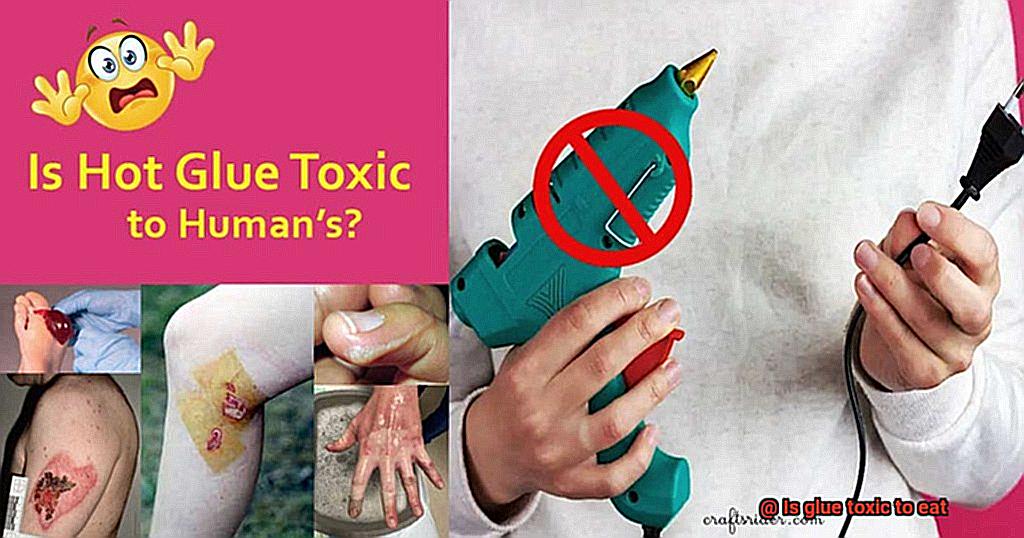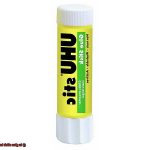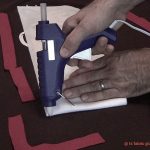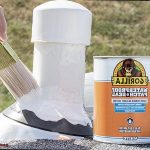You know that little voice in your head that says, “Don’t eat the glue”? Well, turns out it’s there for a reason. But have you ever wondered why? Is glue really as toxic as they say? In this blog post, we’re going to dive deep into the sticky world of glue and explore whether it’s safe to chow down on. From everyday household glue to those heavy-duty industrial ones, we’ll break down the potential risks of ingesting these sticky substances. Because let’s face it, understanding what happens when glue meets our insides is crucial for our own well-being and the well-being of those we care about. So buckle up and get ready to separate fact from fiction when it comes to glue and its effects on our bodies.
Types of Glue and Their Potential Health Risks
Contents
- 1 Types of Glue and Their Potential Health Risks
- 2 Common Ingredients in Glue That Can Be Dangerous When Ingested
- 3 Short-Term Effects of Eating Glue
- 4 Long-Term Effects of Eating Glue
- 5 How to Prevent Accidental Ingestion of Glue
- 6 First Aid for Accidental Ingestion of Glue
- 7 Parental Tips on Keeping Kids Away from Eating Glue
- 8 Natural Alternatives to Chemical-Based Adhesives
- 9 Conclusion
Glue is a handy tool for sticking things together, but it’s crucial to understand that it should never be ingested. In this article, we will explore the potential health risks associated with different types of glue if swallowed. Let’s dive in and learn how to stay safe while using glue.
Super Glue (Cyanoacrylate):
Super glue is renowned for its quick-drying and strong bonding properties. However, consuming super glue can lead to serious health issues. Swallowing super glue may cause a burning sensation in the mouth and throat and can even make it difficult to breathe. Remember, super glue is a hero for fixing things, not for eating.
Craft Glue:
Craft glue is a staple in arts and crafts projects. While it is generally safe to handle, ingesting craft glue can have unpleasant consequences. Consuming large amounts of craft glue can result in stomach discomfort, nausea, and vomiting. So let’s keep this adhesive where it belongs – on our creative works, not in our bellies.
Wood Glue:
Wood glue is perfect for woodworking projects and creating sturdy bonds between wood pieces. Ingesting small amounts of wood glue is unlikely to cause harm, but consuming large quantities may lead to gastrointestinal discomfort. Let’s remember to stick with using wood glue only for its intended purpose.
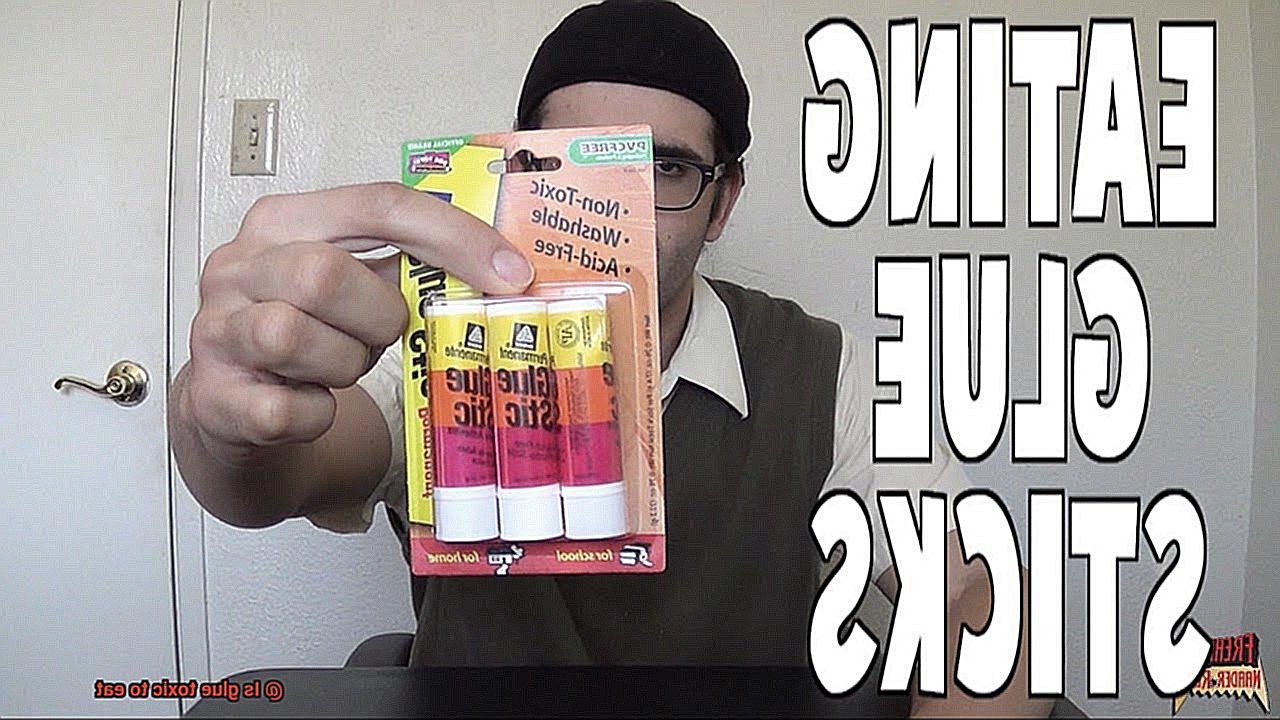
Epoxy Glue:
Epoxy glue is a magical adhesive known for its strong bond. However, some epoxy glues contain chemicals like bisphenol A (BPA) that can disrupt the body’s hormonal balance if ingested. Symptoms of consuming epoxy glue include nausea, headache, and abdominal pain. So let’s reserve epoxy for repairs and not as an accidental snack.
Contact Cement:
Contact cement is a powerful adhesive commonly used for bonding rubber, metal, and other materials. However, the fumes emitted by contact cement can be toxic if inhaled in large quantities. Ingesting contact cement can result in gastrointestinal irritation, stomach pain, and difficulty breathing. Remember to keep contact cement far away from your mouth.
Conclusion:
In conclusion, glue is a valuable tool for various projects but should never be ingested. Each type of glue presents different potential health risks if consumed. Whether it’s super glue causing burning sensations or epoxy glue containing harmful chemicals, the message remains the same: glue is for sticking things together, not for eating. If accidental ingestion occurs, seek immediate medical attention.
Common Ingredients in Glue That Can Be Dangerous When Ingested
Glue, the unsung hero of crafts and repairs, holds a secret danger when it comes to ingestion. It’s crucial to be aware of the potential risks associated with consuming glue. In this article, we will delve into the common ingredients found in glue that can unleash havoc when ingested.
Polyvinyl acetate (PVA):
PVA glue, a staple in schools and households, is generally safe. However, consuming large quantities can lead to gastrointestinal discomfort like a tempestuous storm wreaking havoc within your body: nausea, vomiting, and diarrhea.
Cyanoacrylates:
Superglue or instant glue, the magician of adhesives, harbors a dark side when ingested. Cyanoacrylates launch an attack on your mouth, throat, and esophagus, igniting irritation like a raging inferno. Symptoms include swallowing difficulties, chest pain, and potential digestive system damage.
Formaldehyde:
A lurking menace in certain woodworking or construction glues, formaldehyde conceals its toxicity until it infiltrates your system. Like a venomous serpent, it poisons your taste buds with burning sensations and torments your throat with irritation. Severe cases may unleash nausea, vomiting, and organ damage.

Solvents:
Glues often employ solvents such as toluene, xylene, or acetone to dissolve or disperse their adhesive properties. Ingesting these solvents paints a grim picture: pounding headaches cloud your mind like thunderstorms, dizziness spins you in circles like a tornado, confusion becomes your reality, and waves of nausea crash upon you. The worst-case scenario? Central nervous system depression.
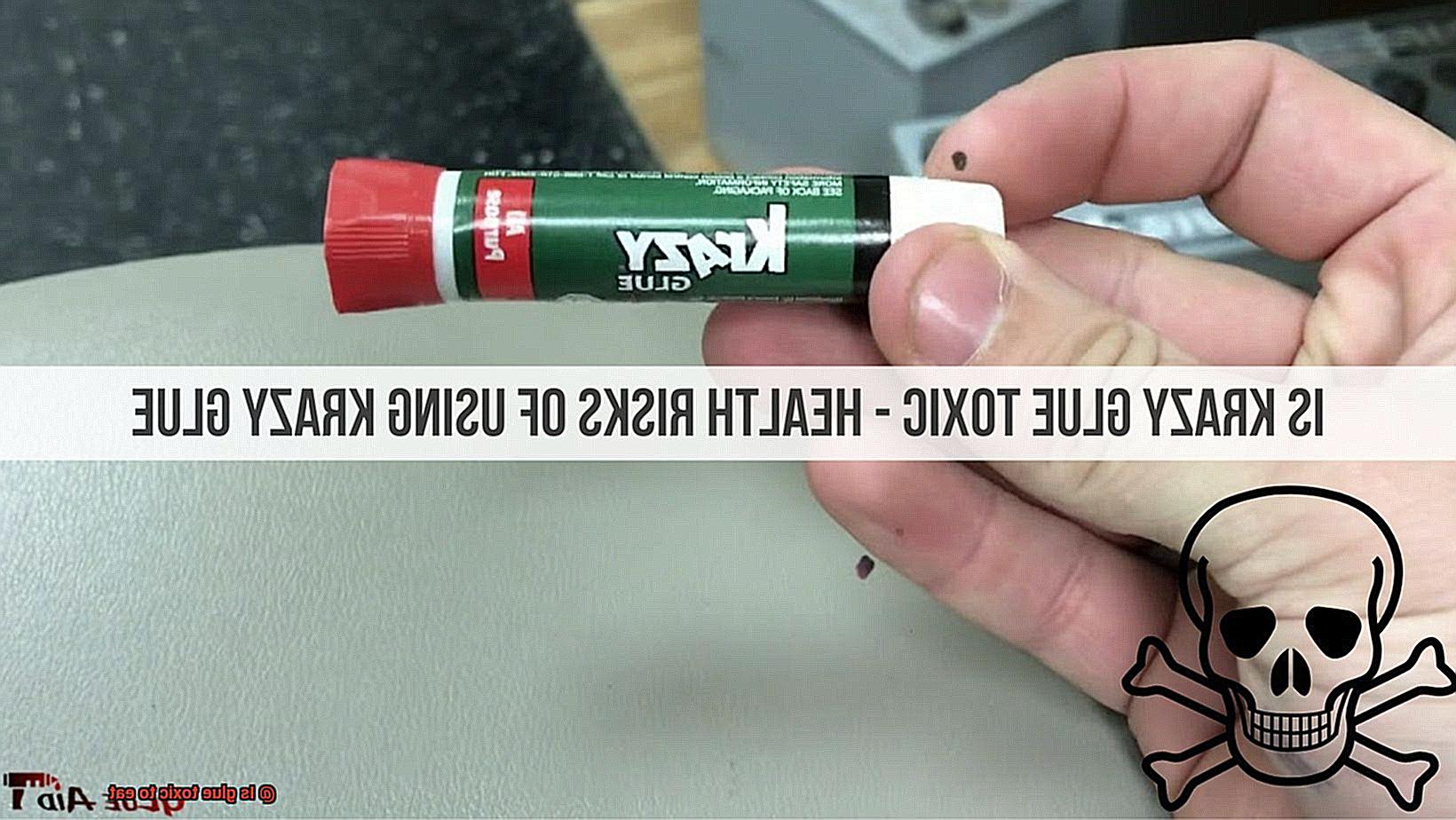
Epoxy Resins:
Epoxy glues showcase their strength by combining two components before use. Yet, when consumed separately or in their uncured state, these components wage war on your body. The gastrointestinal tract becomes a battleground of irritation, and your liver and kidneys face potential toxicity.
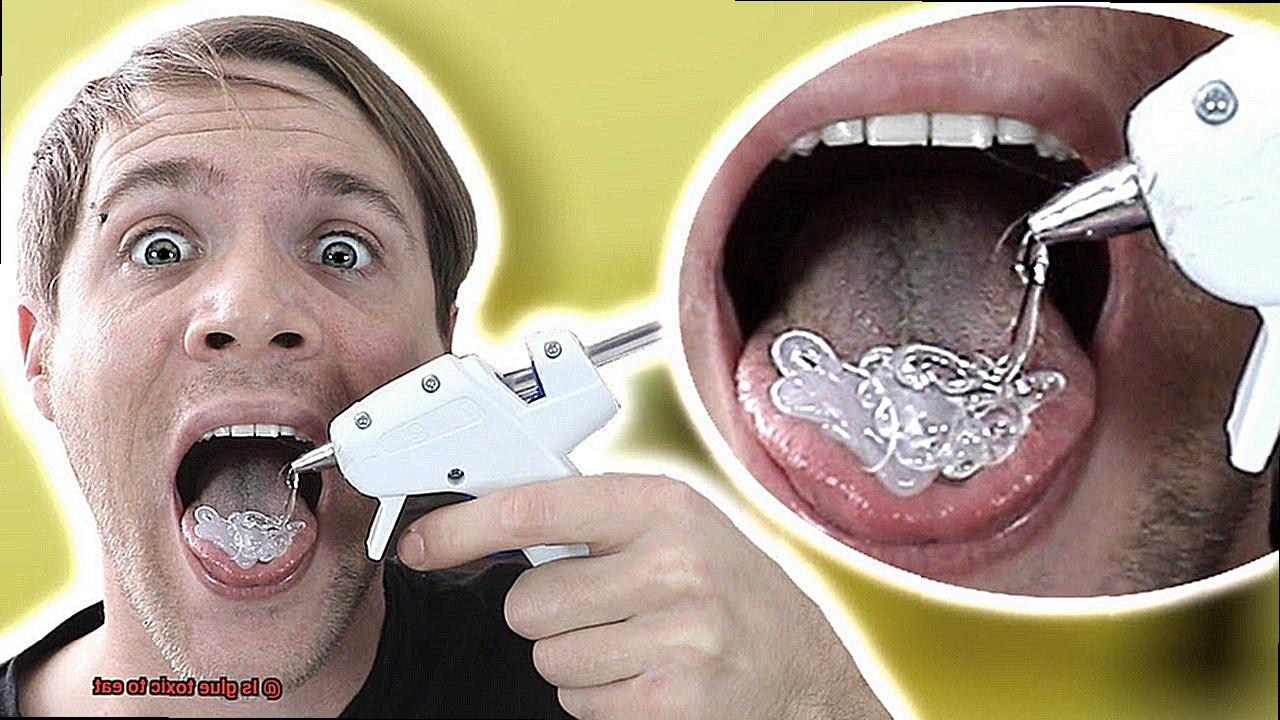
Short-Term Effects of Eating Glue
Glue, a common household item used for crafting and repairs, is not meant to be ingested. However, accidents happen, and some individuals may consume glue out of curiosity or by mistake. In this article, we will explore the short-term effects of eating glue and shed light on why it can be harmful to the body.
To begin with, it’s crucial to understand that glue contains various chemicals like solvents, resins, and additives that can be toxic when ingested. The short-term effects of eating glue can vary depending on the type of glue and the amount consumed.
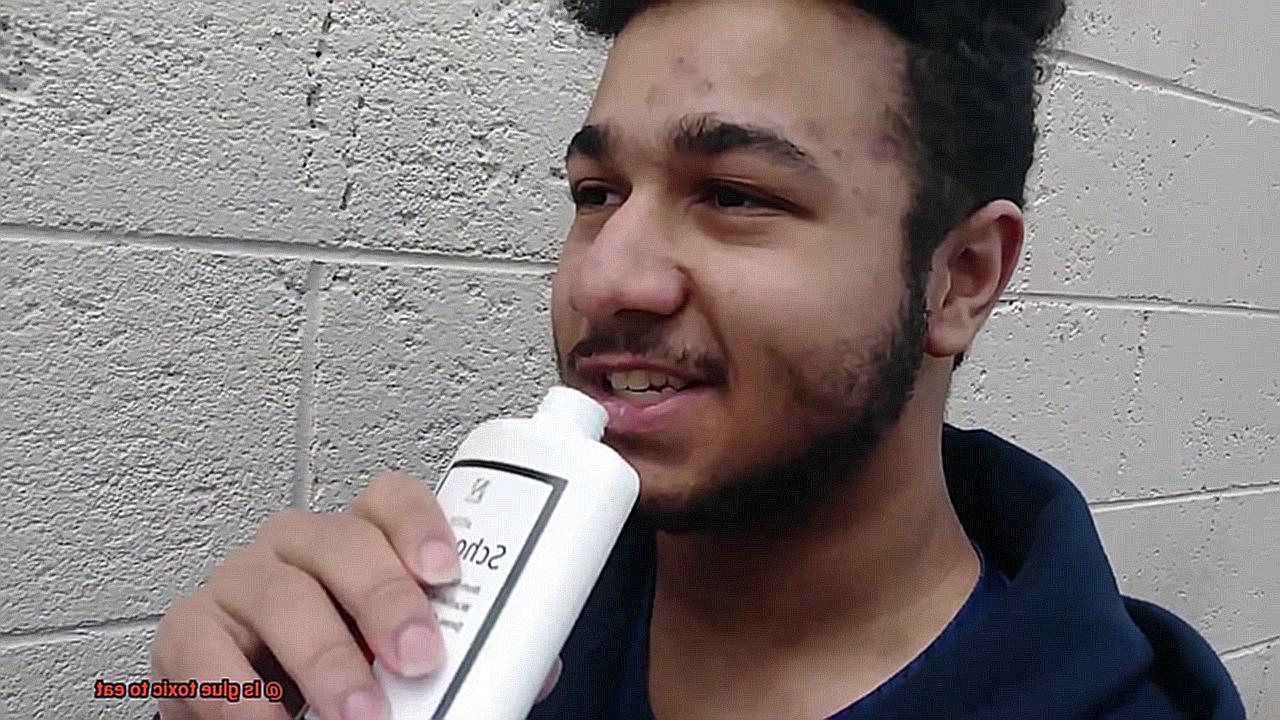
One of the most common short-term effects of ingesting glue is gastrointestinal distress. Picture this: experiencing intense nausea, followed by uncontrollable vomiting and excruciating stomach pain. This uncomfortable sensation can even escalate to include diarrhea, leaving you feeling drained and dehydrated. It goes without saying that these tummy troubles are far from pleasant.
In addition to these digestive discomforts, glue can also cause irritation and burning sensations in your mouth, throat, and digestive tract. The moment the glue enters your system, it can provoke a fiery sensation that leaves you longing for relief. What’s worse is that swallowing glue can become a choking hazard if it gets lodged in your airway, creating difficulty in breathing. This danger should never be underestimated.
But wait, there’s more. Some types of glue contain toxic substances like formaldehyde or toluene. Ingesting these toxic glues can result in more severe short-term effects. Imagine feeling lightheaded and dizzy as if the world around you is spinning out of control. Headaches may pound inside your skull, making it challenging to concentrate or think clearly. In extreme cases, confusion or even loss of consciousness may occur, putting your well-being at serious risk.
If you or someone you know has accidentally consumed glue, it is crucial to seek immediate medical attention. Don’t hesitate or wait for symptoms to worsen. The expertise of healthcare professionals is needed to assess the situation and provide appropriate treatment.
Long-Term Effects of Eating Glue
While it may seem harmless or even tempting, eating glue can have serious implications for your physical, psychological, and nutritional health. So, let’s stick together and explore the potential consequences.
Toxic Chemicals and Nervous System Impact:
Certain types of glue contain toxic chemicals like toluene or xylene, which can wreak havoc on your nervous system over time. Prolonged exposure to these substances can lead to a cascade of undesirable effects including dizziness, headaches, and even neurological disorders. Imagine feeling unsteady on your feet, plagued by frequent bouts of confusion – definitely not the kind of sticky situation you want to find yourself in.
Gastrointestinal Issues and Blockages:
Your digestive system wasn’t designed to process glue. Regular consumption can lead to blockages in your gut, causing excruciating abdominal pain, stubborn constipation, and potentially requiring invasive medical intervention. Trust me when I say you don’t want to be stuck with a clogged-up system.
Nutritional Deficiencies:
When you replace nutritious food with glue, you’re depriving your body of essential nutrients, vitamins, and minerals needed for proper growth and development. Over time, this can result in a multitude of nutritional deficiencies that impact your overall well-being. Remember, glue is for crafts, not meals.
Weakened Immune System:
Frequent glue consumption can weaken your immune system, leaving you defenseless against invading pathogens. Your body’s ability to fight off bacteria and viruses may be compromised due to the negative impact of glue on your health. Let’s keep our defenses strong – leave the glue on the craft table where it belongs.
Psychological Effects:
Some individuals develop an unhealthy habit or compulsion to eat glue, which can lead to emotional distress and other mental health issues. The psychological effects of consuming glue should not be ignored, as they can have a lasting impact on one’s overall well-being. Let’s find healthier ways to satisfy our curiosity and avoid putting our mental health at risk.
Conclusion:
While experimenting with glue may seem tempting, it’s crucial to understand the potential long-term effects of consuming it. From toxic chemicals and gastrointestinal issues to nutritional deficiencies and weakened immune systems, the consequences can be severe. If you or someone you know has been regularly eating glue or experiences any adverse symptoms after ingestion, seeking medical attention is vital for proper evaluation and guidance. Remember, glue belongs in crafts, not in your belly.
How to Prevent Accidental Ingestion of Glue
Glue is not meant to be eaten and can be harmful if accidentally ingested. It is crucial to take steps to prevent accidental ingestion, especially for children who might mistake glue for food or candy. By following some simple precautions, we can ensure the safety of everyone involved.
Store Glue Safely:
To prevent accidental ingestion, it is essential to store glue in a secure place out of reach and sight of children and pets. Keep it away from easily accessible areas like countertops or low shelves. Instead, opt for locked cabinets or high shelves that are inaccessible to little hands. Additionally, make sure the containers are tightly sealed to avoid spills or exposure.
Read and Follow Instructions:
Always read and follow the instructions on the glue packaging. Some glues may have specific warnings or precautions regarding ingestion, so it is essential to be aware of these. By following the instructions provided by the manufacturer, you can minimize the risk of accidents and ensure safe usage.
Supervise and Educate:
When using glue around children, especially younger ones, close supervision is key. Children are naturally curious and may be tempted to taste or consume glue unknowingly. By closely supervising children during craft activities or any other situations where glue is involved, you can intervene and prevent accidental ingestion. Additionally, take the time to educate children about the dangers of ingesting glue and emphasize that it should never be put in their mouths.
Choose Non-Toxic Glues:
Opt for non-toxic and child-safe glues whenever possible, especially for arts and crafts projects involving children. These types of glues are formulated with non-harmful ingredients that minimize the risk of adverse effects if accidentally ingested. Natural glues made from ingredients like vegetable starch or flour-based glues are good alternatives if accidental ingestion occurs.
Keep Glue Separate:
To avoid confusion or accidental ingestion, store glues separately from other potentially toxic substances such as cleaning products or medications. By keeping glue in a separate designated area, you eliminate the risk of mistakenly ingesting harmful substances. This practice also ensures that glue is easily recognizable and not mistaken for something else.
Seek Immediate Medical Attention:
In the event someone accidentally ingests glue, it is vital to seek immediate medical attention. Contact a poison control center or visit a healthcare professional who can provide appropriate advice and treatment based on the situation. Time is of the essence, so do not delay seeking medical help if ingestion occurs.
First Aid for Accidental Ingestion of Glue
Accidental ingestion of glue can be a sticky situation, especially when curious little ones mistake it for something yummy. However, there’s no need to panic. I’m here to guide you through the essential first aid steps you can take if this unfortunate mishap occurs.
First and foremost, it’s important to understand that glue can contain some not-so-friendly chemicals like formaldehyde and acetone. The severity of the effects depends on factors such as the type of glue and the amount ingested. So, let’s spring into action with these crucial steps:
- Stay calm and assess the situation: Take a deep breath and check if the person is conscious and able to swallow. If they are, have them drink a glass of water or milk to dilute the glue and help it pass through their system. This will also prevent it from adhering to the throat or stomach lining.
- Do not induce vomiting: Unless directed by a medical professional, avoid making them throw up as this could cause more harm or even lead to the glue being inhaled into their lungs. We definitely don’t want that sticky situation to escalate.
- Keep an eagle eye on symptoms: Nausea, vomiting, abdominal pain, difficulty breathing – these are all potential signs of glue ingestion. Monitor their breathing and heart rate while waiting for medical help to arrive. Every second counts.
- Gather information: If possible, find out what type of glue was ingested and share this vital information with the medical professionals. It will greatly assist them in determining the most appropriate treatment plan.
Remember, seeking immediate medical attention is crucial if someone has ingested glue, especially if they are experiencing severe symptoms or if a large amount has been ingested. So don’t hesitate to call for help. By following these first aid steps and seeking professional assistance promptly, you’re taking the right steps towards ensuring the well-being of your loved ones.
Parental Tips on Keeping Kids Away from Eating Glue
One common household item that may pose a risk to our little ones is glue. While it may seem harmless, glue contains toxic chemicals that can be harmful if ingested. In this article, we will explore why it is important for parents to take precautionary measures to keep their children away from eating glue and provide some helpful tips to ensure their safety.
Educate Your Child:
One of the first steps in keeping your child away from eating glue is to educate them about its dangers. Glue is not food and should never be put in their mouths. Explain that glue contains chemicals that can make them sick if ingested. Use simple language that they can understand and emphasize the importance of keeping glue away from their mouths.
To make it more relatable, you can use examples such as comparing glue to medicine or cleaning products that they know are harmful if consumed. Reinforce the message by explaining the specific risks, such as stomachaches, vomiting, or even poisoning, that can result from eating glue.
Store Glue Safely:
Preventing access to glue is crucial in keeping children away from consuming it. Store glue out of reach and sight of children. Keep it in a locked cabinet or high up on a shelf where they cannot access it easily. This will help ensure that they don’t come into contact with glue when you are not around to supervise.
Additionally, consider using childproof locks on cabinets where glues and other potentially dangerous substances are stored. This extra layer of security adds an additional barrier between your child and any potential harm.
Choose Non-Toxic Glue:
Opt for non-toxic glues that are specifically labeled as safe for children. These glues are often made from natural ingredients and are less likely to cause harm if accidentally consumed. Avoid using glues that look like food or have a sweet scent, as these can be enticing to young children.
When selecting glue for craft activities or school projects, read the labels carefully and choose products that are explicitly marked as non-toxic. This way, even if your child accidentally puts the glue in their mouth, you can have peace of mind knowing that it won’t pose a serious health risk.
Supervise Craft Activities:
When your child is engaged in craft activities or using glue, make sure to supervise them closely. Children can become curious and may forget the rules about not eating glue. By keeping a close eye on them, you can prevent any incidents of glue consumption.
Engage with your child during craft time, ask questions about what they are creating, and show genuine interest in their projects. This not only allows you to monitor their behavior but also helps create a positive bonding experience while reinforcing the importance of using glue for its intended purpose.
Natural Alternatives to Chemical-Based Adhesives
In an era where health and environmental concerns are paramount, the demand for natural alternatives to chemical-based adhesives has skyrocketed. This article delves into the realm of natural adhesives, unlocking their potential as safe and eco-friendly options.
Plant-Based Adhesives:
Nature’s bounty offers a range of plant-based adhesives that are non-toxic, biodegradable, and environmentally friendly:
- Vegetable starch adhesive: Harnessing the power of plants like corn, tapioca, or potato, this adhesive boasts a gentle touch and leaves no toxic residue behind.
- Soy protein adhesive: Derived from versatile soybeans, it rivals traditional glue in its adhesive properties but spares us from inhaling harmful fumes.
- Casein protein adhesive: Crafted from milk proteins, this adhesive bonds with strength and finesse, making it a go-to choice for woodworking and paper crafts.
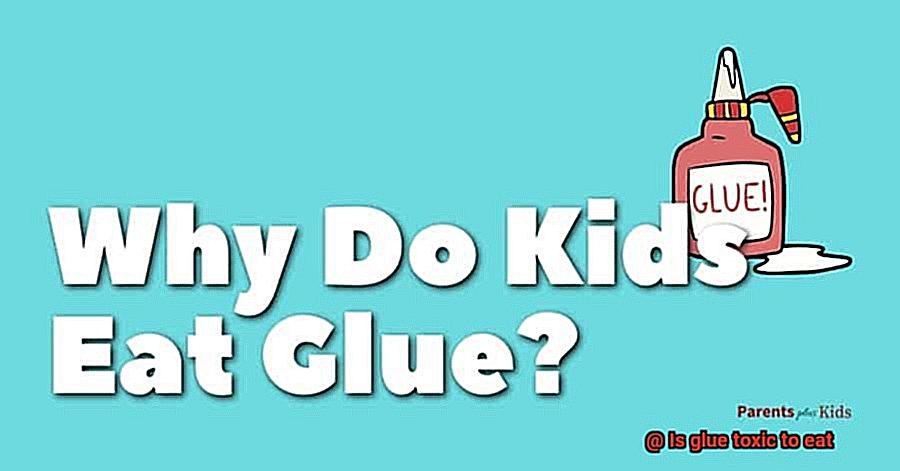
Gelatin:
Derived from animal collagen, gelatin is a natural adhesive that has stood the test of time. It serves as a reliable companion in various craft projects while ensuring safety remains uncompromised.
Advantages of Natural Adhesives:
Choosing natural adhesives brings forth an array of benefits:
- Non-toxic and safe for use: Bid farewell to hazardous chemicals and welcome adhesives that prioritize your well-being.
- Environmentally friendly and biodegradable: Reduce your ecological footprint with adhesives that seamlessly blend into Mother Nature’s embrace.
- Versatile applications: From delicate paper crafts to robust woodworking projects, natural adhesives offer a solution for every creative endeavor.
- A safer alternative: For those with concerns about toxicity, natural adhesives provide peace of mind without compromising on quality.
Considerations:
While natural adhesives have their merits, it’s essential to keep a few factors in mind:
- Longer drying times: Compared to their chemical-based counterparts, natural adhesives may require a little more patience during the drying process. However, the rewards of safety and eco-friendliness are well worth the wait.
- Follow manufacturer instructions: To ensure optimal performance and longevity, adhere to the guidelines provided by the adhesive’s manufacturer.
- Ventilation is key: When working with any adhesive, including natural options, ensure proper airflow in your workspace to maintain a healthy environment.
Conclusion
In conclusion, it is crucial to understand that consuming glue can have severe and potentially life-threatening consequences. Glue contains toxic chemicals that are harmful to the human body when ingested. The ingestion of glue can lead to symptoms such as nausea, vomiting, abdominal pain, and even organ damage. Furthermore, some glues may contain substances like formaldehyde or solvents that can cause long-term health issues if consumed regularly.
It is important to note that glue is not intended for consumption and should never be treated as a food or beverage. The warning labels on glue products clearly indicate the potential dangers of ingestion. Manufacturers design glues for their adhesive properties, not for human consumption.
If someone accidentally ingests glue, it is vital to seek immediate medical attention. Medical professionals will be able to provide appropriate treatment and minimize any potential harm caused by the toxic substances in glue.
To ensure one’s safety and well-being, it is crucial to keep glue out of reach from children and individuals who may mistakenly consume it. Educating oneself about the potential hazards of glue ingestion is essential in preventing accidents and protecting our health.

